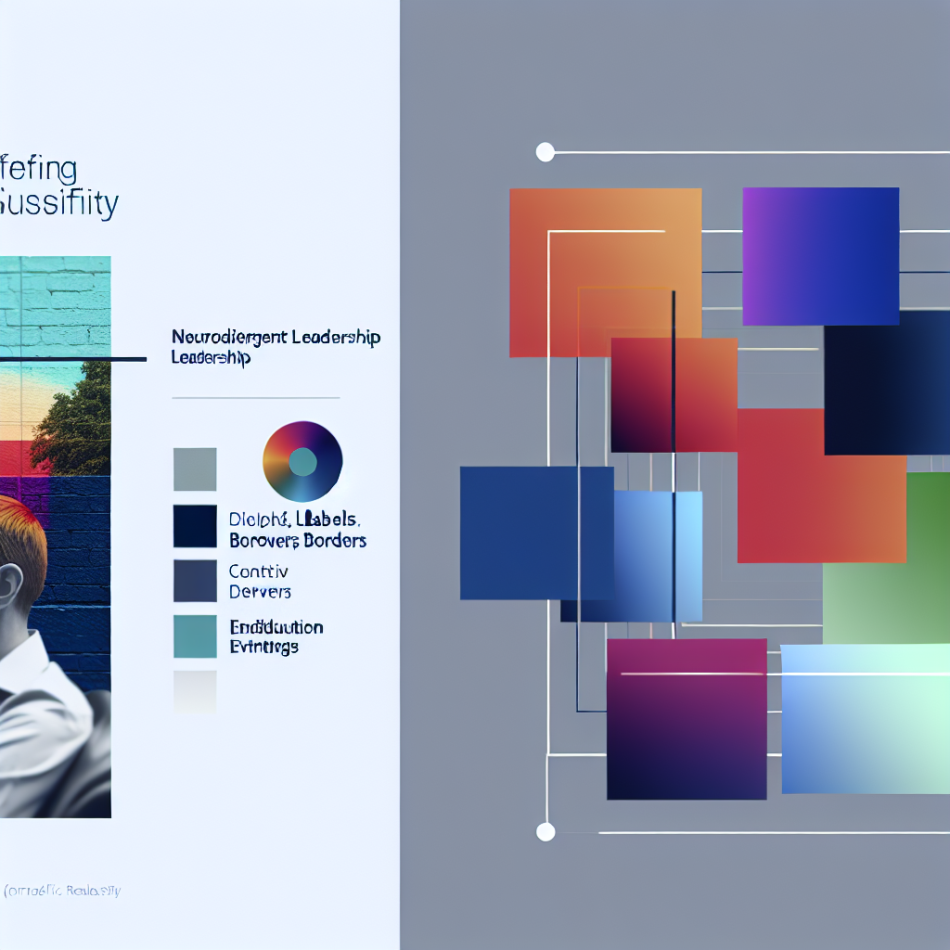Redefining Leadership Through Neurodiversity
In a world that often prioritises conformity, neurodivergent leaders—those with autism, ADHD, dyslexia, and other cognitive differences—are reshaping management paradigms. Their unique perspectives challenge traditional notions of what makes an effective leader, proving that divergent thinking isn’t a hindrance but a superpower. This article explores how traits associated with neurodivergence fuel innovation, empathy, and resilience in leadership, and why embracing cognitive diversity is not just inclusive but transformative for organisations.
The Strengths of Neurodivergent Thinking
Neurodivergent individuals often process information, solve problems, and interact with the world in ways that differ from neurotypical norms. These differences, once dismissed as weaknesses, are increasingly recognised as strategic assets in leadership. For instance, autistic leaders may excel in systematic thinking and attention to detail, while those with ADHD often thrive in dynamic, fast-paced environments due to their adaptability and hyperfocus. Dyslexic thinkers, meanwhile, frequently demonstrate exceptional creativity and big-picture problem-solving.
Such strengths translate into tangible business advantages:
- Innovation: Divergent thinking fosters unconventional solutions to complex challenges.
- Resilience: Navigating a world not designed for neurodivergent minds builds tenacity and grit.
- Empathy: Many neurodivergent leaders have a heightened awareness of diversity, fostering inclusive team cultures.
Autistic Leadership: Precision and Passion
Autistic leaders often bring a laser-focused dedication to their fields, combining deep expertise with meticulous attention to detail. Their ability to identify patterns and inconsistencies can streamline processes, mitigate risks, and drive quality control. For example, an autistic manager might excel in roles requiring data analysis or operational efficiency, spotting trends others overlook.
Moreover, their straightforward communication style—often valuing honesty over social niceties—can reduce workplace ambiguity. While this may initially seem abrupt, it cultivates transparency, ensuring teams align around clear, unbiased goals. Autistic leaders may also champion psychological safety by advocating for structured, predictable environments where all employees understand expectations.
ADHD and the Power of Hyperfocus
Leaders with ADHD frequently exhibit high energy, creativity, and an ability to pivot swiftly—traits critical in industries like tech, marketing, or entrepreneurship. Their brains are wired to connect disparate ideas, making them adept at brainstorming and visionary thinking. While traditional workplaces might misinterpret their restlessness as disorganisation, ADHD leaders often thrive under pressure, using deadlines as catalysts for productivity.
Hyperfocus, a common ADHD trait, allows them to immerse deeply in tasks they find stimulating, often leading to breakthroughs. When managed effectively, this intensity can inspire teams to pursue ambitious goals. Additionally, their spontaneity can foster a culture of agility, encouraging teams to embrace change rather than fear it.
Dyslexic Thinking: Seeing the Forest and the Trees
Dyslexic leaders are frequently natural storytellers and strategic thinkers. Their brains are adept at spatial reasoning and holistic analysis, enabling them to visualise complex systems and long-term outcomes. Richard Branson and IKEA founder Ingvar Kamprad, both dyslexic, attribute their success to this ability to simplify intricate concepts into actionable visions.
Dyslexic thinkers also tend to excel in delegation, as their strengths lie in overarching strategy rather than minute details. This encourages trust within teams, empowering others to take ownership. Furthermore, their lived experience of overcoming challenges often makes them compassionate mentors who prioritise skill development over traditional metrics of success.
Building Neuroinclusive Workplaces
To harness neurodivergent leadership, organisations must move beyond mere accommodation and actively create environments where different cognitive styles flourish. This includes:
- Flexible work structures (e.g., varied communication channels, adjustable deadlines).
- Training managers to recognise and nurture diverse thinking styles.
- Redefining “professionalism” to value substance over social conformity.
Neuroinclusion also requires challenging biases in hiring and promotion. Skills-based assessments, instead of traditional interviews, can better identify leadership potential in neurodivergent candidates. Similarly, mentorship programs pairing neurodivergent and neurotypical employees foster mutual learning and dismantle stereotypes.
The Future of Leadership is Diverse
As businesses face increasingly complex global challenges, the need for neurodivergent leadership will only grow. Teams led by cognitively diverse individuals are better equipped to innovate, adapt, and empathise—critical skills in our rapidly evolving world. By reframing neurodivergence as a competitive advantage, companies don’t just support marginalised groups; they future-proof their success.
Conclusion
Neurodivergent leaders—autistic, ADHD, dyslexic, and beyond—are rewriting the rules of effective management. Their unique strengths, from systematic precision to creative risk-taking, prove that leadership thrives on cognitive diversity. Organisations that embrace neuroinclusion gain not only ethical credibility but also a tangible edge in problem-solving and innovation. The path forward is clear: true progress lies not in fixing differences, but in leveraging them to build richer, more resilient workplaces.
